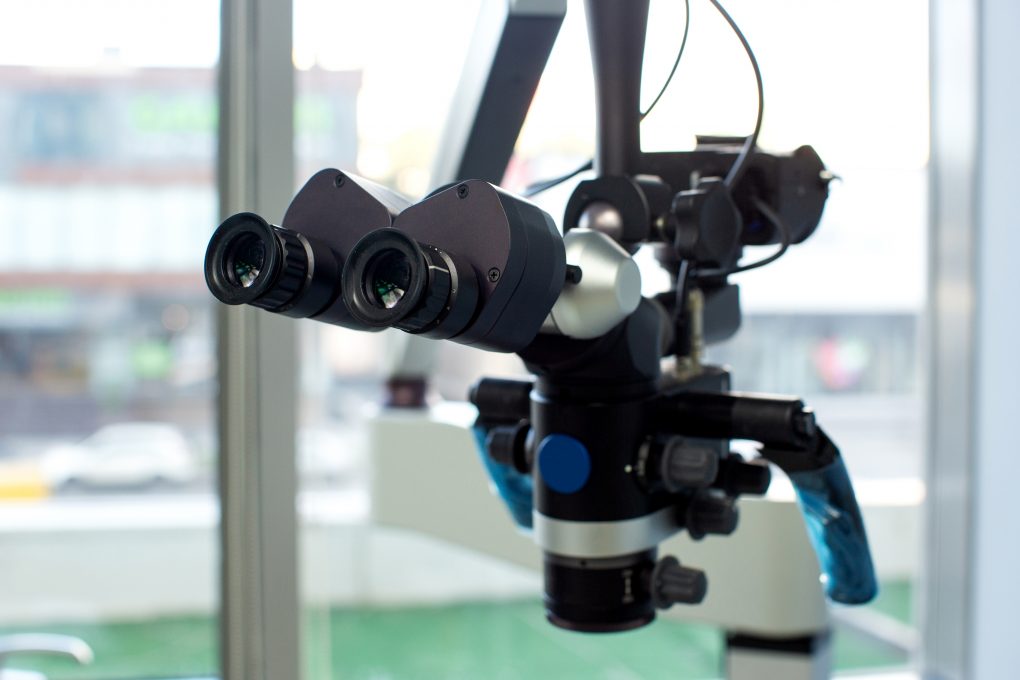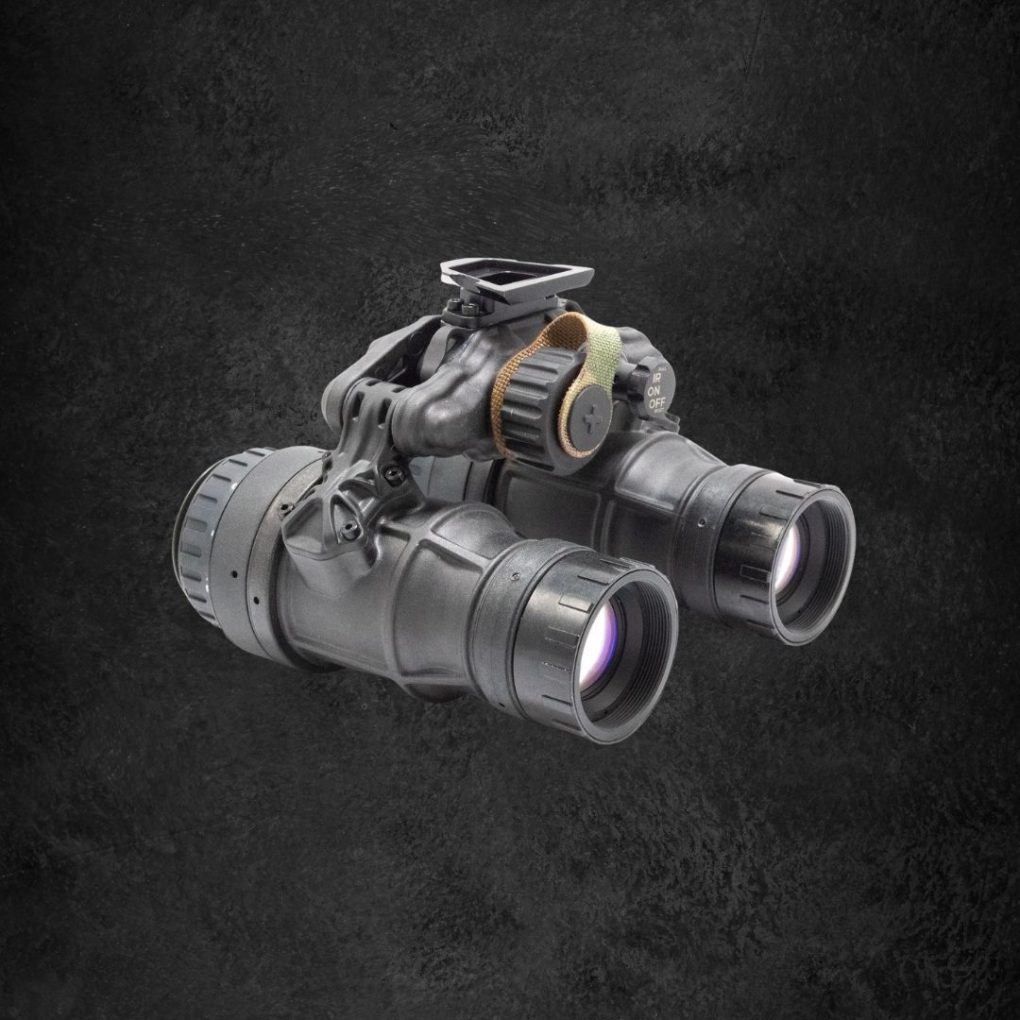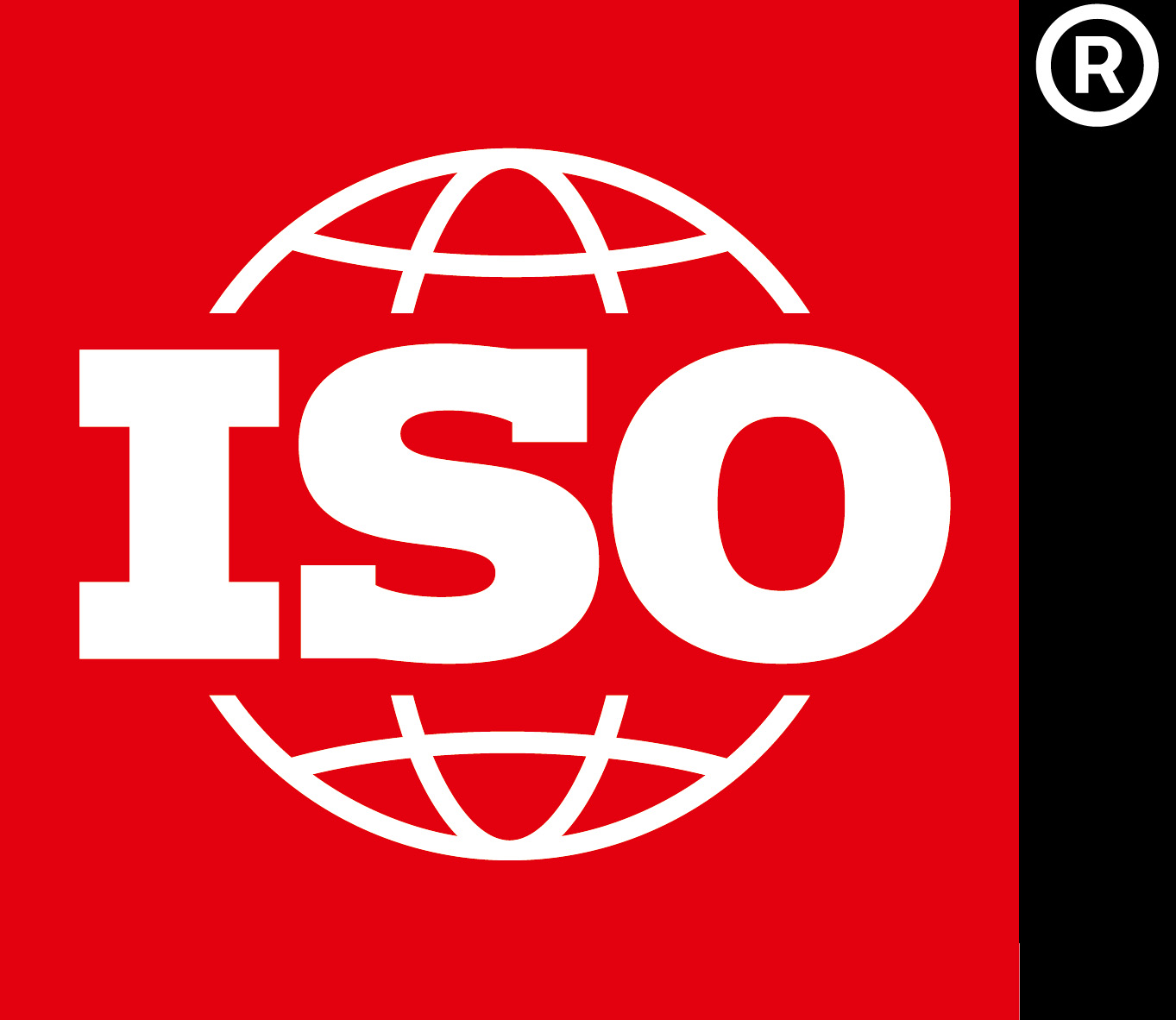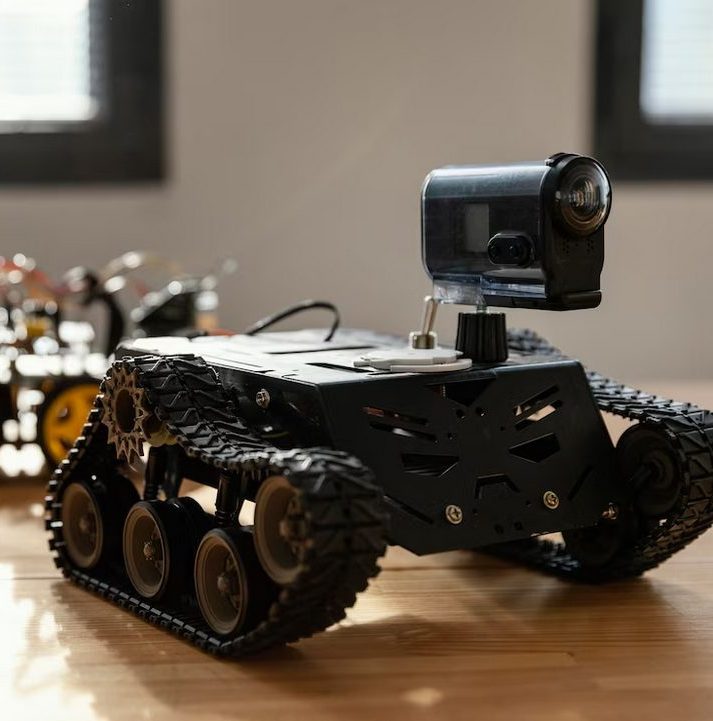Night vision technology has been around for many years, but the application of this technology in robotics and automation has only recently become a viable option. This article will explore the benefits, potential applications, and challenges of night vision in robotics and automation
The first section of this article will provide an overview of night vision technology, focusing on its history and current capabilities.
The second section will discuss the potential benefits of using night vision in robotics and automation, touching on aspects like thermal imaging and IR illuminators.
The third section will examine some of the potential applications of night vision technology in robotics and automation, including the use of helmet-mounted night vision products and IR laser aiming devices.
Finally, the fourth section will explore the challenges and future outlook of night vision in robotics and automation, touching on topics like night vision maintenance and maximizing performance in extreme conditions.
→ Take the time to read different articles by Steele Industries!
– NIGHT VISION TECHNOLOGY: A COMPREHENSIVE OVERVIEW
– A BRIEF HISTORY OF NIGHT VISION DEVICES
– And more, visit our blog!
⇒ Contact us:
-Call us at (800) 674-7302
-E-mail: sales@steeleindinc.com
–Facebook/ steeleindustriesinc
–Instagram/steeleindustriesinc
Overview of Night Vision Technology
Night vision technology is a topic of increasing importance in the field of robotics and automation.
There are various types of night vision technologies, including image intensifier tubes and thermal imaging, each with its own unique benefits and drawbacks.
It is important to understand how night vision devices work and to compare different night vision technologies in order to determine which is most suited to a given application.
Types of Night Vision Technologies
Through the utilization of infrared light, starlight intensifiers, active illumination, and thermal imaging, night vision technologies provide a means for robots and automated systems to navigate in low-light environments. These technologies differ in their approach to amplifying light to detect objects under darkness:
- Infrared Light: A passive night vision technology, infrared light uses a series of lenses to amplify light from the infrared spectrum. This allows robots and automated systems to detect objects in darkness by relying on the heat they generate.
- Starlight Intensifiers: This type of night vision technology uses an image intensifier tube to amplify light from the visible spectrum, allowing robots and automated systems to detect objects in darkness by relying on the light they reflect or emit.
- Active Illumination: This type of night vision technology relies on the use of an active light source, such as a laser or infrared illuminator, to create a bright image in dark environments. The use of active illumination allows robots and automated systems to detect objects by relying on the light that is reflected back off the object.
- Thermal Imaging: This type of night vision technology uses infrared sensors to detect the heat generated by objects, allowing robots and automated systems to detect objects in darkness by relying on their temperature.
This technology is especially useful in environments with high levels of dust and smoke, as it can detect objects that would otherwise be obscured.
How Night Vision Devices Work
The inner workings of night vision devices are complex, but their purpose is to enable robots and automated systems to perceive and navigate in low-light environments.
These devices convert the normally invisible infrared radiation emitted by objects into images that can be seen by the device. This is done through the use of an infrared-sensitive sensor which converts the infrared radiation into electrical signals.
These electrical signals are then processed and amplified to create a visible image.
The quality of the image produced by the night vision device depends on the sensitivity of the sensor and the quality of the optics used in the device.
To maximize the amount of light that can be collected, the lenses used in night vision devices are typically made of high-grade glass and are designed to collect light from a wide range of wavelengths.
Additionally, the sensors in night vision devices are often cooled to reduce background noise and improve image quality.
With these features, night vision devices can produce clear images even in the darkest of environments.
Comparing Night Vision Technologies
Comparing different technologies used in night vision devices can provide insight into the effectiveness of the various components used in the devices, as well as the range of potential applications for the technology.
Different night vision technologies can be divided into two main categories: active and passive.
Active night vision uses external sources of light, such as infrared illuminators, to produce a visible image.
Passive night vision does not use any external light sources, instead relying on the ambient infrared light present in the environment.
When comparing these two technologies, the primary advantages of active night vision are its greater range and its ability to penetrate dust, smoke, and fog.
On the other hand, the primary advantages of passive night vision are its lower cost and its smaller size.
Additionally, passive night vision technology is less visible to the naked eye, making it more useful in covert operations.
Benefits of Night Vision in Robotics and Automation
Night vision technologies are increasingly being utilized in robotics and automation to enhance perception in low-light conditions.
This technology provides improved situational awareness and monitoring, higher safety and reliability, and expanded operational capabilities.
For instance, night vision enabled robots are capable of navigating in dark environments, thus providing a greater range and flexibility of operation to users in a variety of industries.
Enhanced Perception in Low-Light Conditions
Enhanced perception in low-light conditions is a vital component of robotic and automated systems as it allows for greater precision and accuracy when operating in dimly lit areas.
Night vision technology, such as infrared imaging and thermal imaging, can be used to overcome the limitations of traditional vision systems and enable robots to see in dark environments. This technology can be used to detect objects, recognize shapes and features, and track motion.
Night vision technology provides numerous benefits to robotics and automation, including:
- Increased accuracy and precision when operating in low-light conditions.
- Improved navigation and obstacle avoidance in dark or foggy conditions.
- Increased safety, as robots can better detect potential hazards in dimly lit environments.
The use of night vision technology in robotics and automation provides a number of advantages that can significantly improve the performance of the automated systems. By using night vision technology, robots can gain better perception in low-light conditions, allowing for greater accuracy and precision when operating in dimly lit areas.
Improved Situational Awareness and Monitoring
By leveraging night vision technology, robotics and automation systems can gain improved situational awareness and monitoring, allowing for more accurate decision making in dimly lit environments. This heightened perception can be used in a variety of applications, ranging from surveillance and security to industrial inspection and monitoring.
For instance, robots with night vision capabilities can be used to navigate autonomously in low-light environments, which can be especially useful in warehouses where lighting conditions are constantly changing. Similarly, in the field of surveillance, night vision systems can be used to detect and track objects in dark settings, thereby allowing for better coverage and performance even in complete darkness.
Additionally, night vision technology can be used to observe and monitor industrial processes in dimly lit environments, enabling robots to detect small changes in the environment and detect abnormalities that may be difficult to identify using traditional lighting.
Night vision can also be used in conjunction with other sensing systems to improve overall situational awareness. By combining night vision with radar, acoustic, and infrared sensing systems, robots can obtain a more comprehensive view of their environment, allowing for greater accuracy and enhanced threat detection.
Furthermore, night vision technology can be used in conjunction with other sensors to accurately determine the location of objects and people in dark environments. In this way, robotics and automation systems can be used to provide increased situational awareness and monitoring capabilities in any low-light environment.
Increased Safety and Reliability
Through improved situational awareness and monitoring, robotics and automation systems can be employed to increase safety and reliability in a wide variety of settings, from surveillance to industrial operations.
Night vision technology can be used to enhance the safety and reliability of these systems by providing the ability to see in low light or no light conditions.
By integrating night vision technology into robotics and automation systems, the following benefits can be realized:
- Enhanced situational awareness and monitoring capabilities
- Improved detection of objects and obstacles in the dark
- Increased accuracy of navigation and positioning
- Optimized accuracy and precision of robotic and automation systems
- Reduced risk of human errors and accidents.
Expanded Operational Capabilities
The integration of night vision technology with robotics and automation systems provides an expanded range of operational capabilities. This technology allows robots and automation systems to operate in darkness or low light conditions, opening up new possibilities for operation and applications.
For instance, robots with night vision can be used for surveillance and reconnaissance operations, such as patrolling a site, or for search and rescue missions in low-light environments. Night vision cameras can be used to provide real-time navigation data, helping robots and automation systems to move safely and accurately in dark or low light conditions.
Additionally, night vision can be used to enhance the situational awareness of automated systems operating in hazardous or unknown environments. By providing robots and automation systems with a greater range of operational capabilities, night vision technology can improve the efficacy and reliability of automated systems.

Potential Applications of Night Vision in Robotics
The utilization of night vision in robotics has a range of potential applications, including:
- Autonomous vehicles and drone navigation, as they are able to detect and avoid obstacles in low-light environments.
- Security and surveillance systems, which can utilize night vision to detect intruders and potential threats in low-light conditions.
- Search and rescue missions, which can benefit from the use of night vision to locate persons in distress in dark and hazardous environments.
- Wildlife and environmental monitoring, which can be improved through the use of night vision, as it enables researchers to observe animals or other environmental phenomena in the dark.
Autonomous Vehicles and Drone Navigation
Autonomous Vehicles and Drone Navigation are increasingly leveraging night vision technology to navigate in low-light environments. The use of night vision technology in robotics has enabled enhanced capabilities for autonomous vehicles and drones, such as:
- Improved safety:
- Increased visibility in low-light conditions
- Reduced risk of collisions due to lack of visibility
- Enhanced navigation:
- Accurate navigation in dimly lit areas
- Improved obstacle avoidance capabilities
- Improved security:
- Ability to detect objects and people in low-light conditions
- Enhanced surveillance and monitoring capabilities
Security and Surveillance Systems
Security and surveillance systems can be enhanced through the use of night vision technology, allowing for objects and people to be detected in otherwise low-light conditions.
This technology can be utilized in a variety of applications, ranging from consumer security systems to large-scale government surveillance projects.
The use of night vision in surveillance systems can be particularly beneficial in reducing the need for additional lighting, as well as providing a clearer view of a larger area.
Additionally, night vision technology can be used to provide an increased level of security to both residential and commercial properties.
Night vision cameras can be installed in an array, allowing for an entire area to be monitored in a single sweep.
The use of night vision technology can also be applied to robotics, allowing for autonomous systems to navigate and respond to their environment in dark or low-light conditions.
This is particularly useful in applications such as search and rescue operations, where autonomous vehicles may need to operate in dark environments.
Additionally, night vision technology can be used to identify objects and people in these environments, allowing for more efficient navigation and the ability to identify potential threats.
Search and Rescue Missions
Search and rescue missions require advanced technology to navigate challenging conditions and identify potential threats, making night vision technology an invaluable tool.
Night vision technology enables rescuers to operate during lowlight conditions, providing a greater level of accuracy and safety during operations.
In addition, night vision technology can provide rescuers with a clearer picture of the terrain, allowing them to accurately assess the situation and identify potential threats.
The use of night vision technology in search and rescue missions can also provide rescuers with situational awareness, enabling them to identify potential dangers and navigate difficult terrain.
Furthermore, this technology can be used to detect individuals that may be hiding or attempting to remain undetected.
By providing a greater level of visibility in low light environments, night vision technology can be an invaluable tool for search and rescue operations.
Wildlife and Environmental Monitoring
In addition to search and rescue missions, night vision and robotics can be used for another increasingly important application: wildlife and environmental monitoring. Night vision technology can be used to observe animals in their natural habitats without disturbing them. This can be beneficial for the preservation and conservation of species as well as for research purposes.
Robotics can be used to automate some of this monitoring, such as tracking animals with sensors or using drones to survey large areas. Night vision and robotics can be used to monitor wildlife in a variety of ways, such as:
- Automated monitoring:
- Tracking animals with sensors
- Using drones to survey large areas
- Using cameras with infrared illuminators to detect animals
- Identification of species:
- Using thermal imaging cameras to identify species
- Observing animals in their natural habitats
- Research purposes:
- Studying the behavior of animals
- Collecting data on the environment and animal populations
- Monitoring the health and well-being of endangered species.
Challenges and Future Outlook
Technical Limitations and Integration pose a challenge to the advancement of night vision technologies in robotics and automation.
Cost and Accessibility Concerns remain a barrier for many organizations seeking to acquire these technologies, while Ethical and Regulatory Factors are crucial areas of focus for those in the field.
As a result, further research is necessary to identify solutions that can overcome these obstacles and realize the potential of night vision in the robotics and automation fields.
Technical Limitations and Integration
Despite the potential benefits of incorporating night vision into robotics and automation, the technical limitations of the technology may impede its successful integration.
Night vision technology relies on the detection of infrared, visible, and ultraviolet light, which may be impeded by environmental factors such as fog, smoke, rain, and snow. Additionally, the range of night vision is limited and the accuracy of the technology can be compromised if the environment is too brightly lit or if there are too many obstacles in the environment.
Furthermore, the cost of integrating night vision technology into robotics and automation systems can be significant, and the technology may not be available in every country.
In order to successfully integrate night vision into robotics and automation, it is important to understand the technical limitations of the technology and to develop strategies to mitigate its effects. For example, the use of sensors to detect motion or infrared signals can help to reduce the range of night vision systems, and the use of filters to reduce light interference can help to increase the accuracy of the technology.
Additionally, it is important to conduct extensive research into the cost implications of integrating night vision technology into robotics and automation systems, and to consider how to make the technology available in a cost-effective way.
Cost and Accessibility Concerns
The cost of integrating night vision technology into robotics and automation systems, as well as the accessibility of the technology in different parts of the world, must be taken into consideration when exploring its potential applications.
Night vision technology is not cheap and, depending on the complexity of the system, can be quite expensive. Additionally, while the technology is becoming more widely available, it is not yet available in all countries or regions. This can be a significant barrier to entry for those trying to explore and use the technology in practical applications.
The cost and accessibility of night vision technology must also be weighed against the potential benefits that it can provide. For example, it can provide increased safety for robotic and automated systems, as well as facilitate better navigation in low-light environments. This can be especially useful in areas such as search and rescue, where vision can be essential for locating people or objects in the dark.
Ultimately, the cost and availability of night vision technology will be an important factor in determining its potential applications in robotics and automation.
Ethical and Regulatory Factors
When considering the potential applications of night vision technology in robotics and automation, ethical and regulatory factors must be taken into account. In particular, the use of night vision technology raises a number of ethical and regulatory questions:
- How will this technology be used?
- Will it be used for surveillance or military purposes?
- Will it be used for civilian purposes, and if so, what kind of data will be collected and how will it be used?
- Who will have access to this technology?
- Will it be available only to governments, or will it be available to the general public?
- Will certain individuals or groups be excluded from accessing the technology?
What will be the implications of using this technology?
- Will it increase the risk of privacy violations?
- Will it have an adverse effect on the environment?
- Will it create new security risks?
Ultimately, these questions must be addressed in order to ensure that night vision technology is being used responsibly and in accordance with existing regulations. Further research is needed to determine the potential implications of using night vision technology in robotics and automation, as well as to ensure that such technology is used ethically and in a manner that is beneficial to society.
Several Night Vision Products Steele Industries Offers
PVS-14 Photonis Gen 2+ White Phosphor
Description:
Our SI/PVS-14 features newly produced Photonis generation 2+ image intensifier tubes, with the White Phosphor model starting at $2799.98. This monocular configuration is popular due to its budget-friendly entry point.
The PVS-14 is powered by a single AA battery and has a 40-degree field of view, which is the same as you would get with a goggle setup. Some may believe that depth perception is compromised with the PVS-14, but that is not true. The device allows one eye to see through it while the other does not, which may initially cause mixed signals in the brain until proper training is undergone. It’s essential to learn how to use night vision devices effectively before attempting more advanced tasks. We recommend seeking training from qualified instructors in your area.
We also offer a FREE HAND SELECTION service for all customers. If you want to be involved in the assembly process, which we strongly encourage, please include the minimum specifications you’re looking for in your order notes. Alternatively, if you’d like to be contacted when your order is in the build queue, simply put “hand select” in your order notes, and we’ll call you for FREE to help you choose your image intensifier.
DIMENSIONS: 4.5″ x 2.0″ x 2.25″
WEIGHT: 12.4oz.
FINISH: Matte Black
POWER: One (1) Standard AA Battery
BATTERY LIFE: Approx. 50 Hours at Room Temp.
WATERPROOF: 60′ for 2 Hours
WARRANTY: 10 Year Warranty & Limited Life Time Service
GATE: Auto
GAIN: Adjustable/ Variable
FOV: 40º
OBJECTIVE LENS: F/1.2
OCULAR LENS EFL: 26mm
DIOPTER: +2 to -6
FOCUS: 10″ to Infinity
BASIC KIT: SI/PVS-14, SI/Lens Pen, Warranty Registration, Quality Check Report, Hoffman Report, Hardcase, Factory Spec Sheet
Act In Black DTNVS – Dual Tube Night Vision Goggle

Description:
Our SI/DTNVS is constructed with new production Elbit Systems of America, L3Harris generation 3 image intensifier tubes, and now Photonis Imaging Tubes. The Elbit White Phosphor model starts at $8599.98, making it a popular choice due to its budget-friendly entry point. Additionally, we offer L3Harris image intensifiers at $10,399.98.
**IPD STOPS NOT INCLUDED; PURCHASE SEPARATELY**
The DTNVS is powered by a single CR123 battery and does not include a factory LEMO port like the RNVG. However, you can purchase a DICC from Jag Consulting to replace the battery compartment, allowing compatibility with battery packs such as the AB Night Vision Inc Ground Optimized Battery Pack. The DTNVS also features auto on/off and articulation, enabling you to stow it against your head for better weight distribution and to fold individual sides up for easier access to your rifle’s optic. By adding retention points and optional IP stops, the DTNVS improves upon its predecessor, the DTNVG.
We provide a FREE HAND SELECTION service for all customers. If you want to participate in the assembly process, which we strongly recommend, please include the minimum specifications you’re looking for in your order notes. Alternatively, if you’d like to be contacted when your order is in the build queue, simply put “hand select” in your order notes, and we’ll call you for FREE to help you choose your image intensifier.
DIMENSIONS: 3″ x 4.13″ x 4.37″
WEIGHT: 17.9z.
FINISH: Matte Black
POWER: One (1) CR123 3v Battery
BATTERY LIFE: Approx. 25 Hours at Room Temp.
WARRANTY: 10 Year Warranty & Limited Life Time Service
GATE: Auto
GAIN: Automatic Gain Control
FOV: 40º
OBJECTIVE LENS: F/1.2
DIOPTER: +2 to -6
FOCUS: 10″ to Infinity
BASIC KIT: SI/DTNVS, SI/Lens Pen, Warranty Registration, Quality Check Report, Hardcase, Factory Spec Sheets
Conclusion
Night vision technology is a powerful tool that can be used to improve the safety, accuracy, and efficiency of robotics and automation systems.
By utilizing night vision, robotics and automation systems can be developed to better operate in low-light or no-light environments.
Night vision has a wide range of potential applications in robotics and automation, such as navigation, surveillance, and object recognition.
As the demand for automation and robotics continues to increase, night vision will become increasingly important to the development of these systems.
With the right investments in research and development, night vision technology can provide powerful solutions for robotics and automation applications.
In the future, night vision is likely to become an essential part of many robotics and automation systems.


